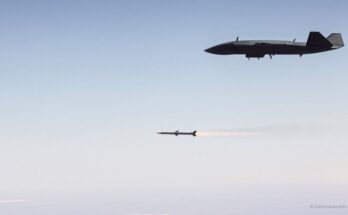by Dan Darling, International Military Markets Analyst, Forecast International
The Philippine government of President Benigno Aquino is pushing a national budget for 2016 that includes a record PHP25 billion ($552 million) earmark for the country’s ongoing military modernization effort. The long-neglected modernization of the Armed Forces of the Philippines (AFP) has become of paramount concern to Manila in light of China’s ongoing military expansion and maritime ambitions in the South China Sea. Those ambitions continue to butt heads with the Philippines’ competing territorial claims over the Spratly Islands and the Scarborough Shoal.
Under the New AFP Modernization Act (Republic Act 10349) – signed into law by Aquino on December 11, 2012, and revised again by the Philippine Congress two months later in February 2013 (though still not signed by Aquino) – the Philippines is embarking on a 15-year effort at bringing its under-equipped and obsolete military inventory up to a higher technical standard. As part of the AFP Modernization Act, the government is to invest PHP75billion-PHP85 billion ($1.65 billion-$1.88 billion) towards equipment modernization and acquisition over the first five-year period (2013-2017). The PHP25 billion allocation noted under the FY16 budget request falls into this category and marks a single-year record investment in military modernization.
The larger allocation for defense under the Aquino government’s 2016 national budget calls for a consolidated PHP172 billion ($3.8 billion) figure, making the Department of National Defense the third-highest beneficiary of the latest draft proposal behind only Education and Public Works. It also would represent a significant 48 percent year-on-year nominal spike in the country’s defense budget from the PHP116 billion ($2.56 billion) allocation in 2015, which itself marked a 29 percent rise.
It should be noted that the 2015 and 2016 increases follow a 26 percent drop in year-on-year defense spending in 2014 due to the Aquino government shifting financial resources to recovery relief made necessary by the effects of Super Typhoon Haiyan and the spate of severe natural disasters hitting the country from October 2013 through January 2014. The latest two budgetary requests for defense therefore indicate that the government seeks to bring the modernization program back on track.
A slew of AFP acquisition projects remain on tap. These include two Navy frigates (price tag estimated at PHP18 billion, or $397 million), three air surveillance radars (PHP2.68 billion, or $59 million), six close air support aircraft (PHP4.97 billion, or $110 million), a multipurpose attack craft program (PHP864 million, or $19 million), and two long-range patrol aircraft (PHP5.98 billion, or $132 million), plus various other items. Meanwhile, delivery of the first two of 12 new South Korean FA-50 light combat aircraft is expected prior to the end of the year.
These assets would provide the AFP with at least a modicum of air-sea presence and advanced detection capability in the South China Sea. Besides the mere presence of a sunken World War II-era former U.S. Navy battleship, the BRP Sierra Madre, which was grounded on Second Thomas Shoal in 1995, the AFP has little permanently stationed presence in the Spratly Islands chain with which to check the advance of China. Meanwhile, under the guise of its Coast Guard and fishing vessels, China has engaged in an island-building campaign in the area that it believes will provide it with de facto control over South China Sea reefs and waters.
Without even the minimum deterrent capability still sought by the AFP, the Philippines has little with which to counter China’s spreading maritime presence and alter the facts on the sea. With China uninterested in arbitrating its territorial dispute with the Philippines through a United Nations tribunal, any hope Manila has of checking a gathering storm of People’s Liberation Army Navy ships and troops spreading across its claimed territory will have to come through regional alliances and U.S. support. A military modernization as limited in scope (though significant for the resource-starved AFP) as the Philippines has embarked on stands little chance of thwarting China’s strategic designs in the South China Sea.
For 50 years, Forecast International intelligence reports have been the aerospace and defense industry standard for accurate research, analysis, and projections. Our experienced analysts compile, evaluate, and present accurate data for decision makers. FI's market research reports offer concise analysis of individual programs and identify market opportunities. Each report includes a program overview, detailed statistics, recent developments and a competitive analysis, culminating in production forecasts spanning 10 or 15 years. Let our market intelligence reports be a key part of reducing uncertainties and mastering your specific market and its growth potential. Find out more at www.forecastinternational.com


